'Nature's loo roll': Verbascum, one of the most curious — and useful — plants you'll find in an English country garden
With its ability to rouge cheeks, settle stomachs and operate as Nature’s loo roll, verbascum is as surprisingly useful as it is pretty, discovers Ian Morton.
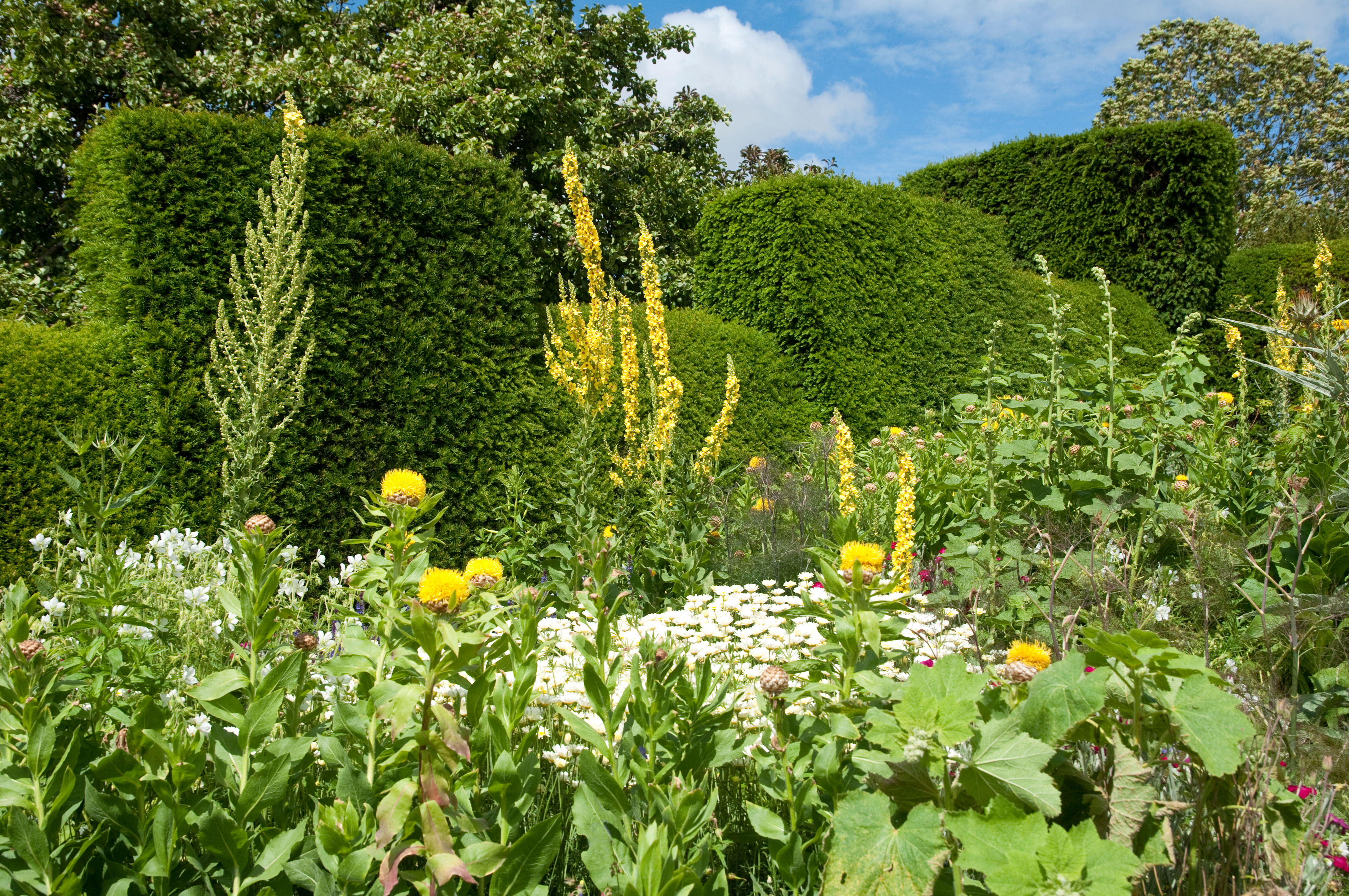

Of all the plants generous to Mankind, verbascum is surely one of the foremost. Many of its folkloric names reveal its sundry practical uses throughout the ages; others have a Biblical whiff or are simply bewildering, their basis lost in time. For medieval women who sought to bring colour to their cheeks, verbascum was known as Quaker’s rouge, a rub of its hairy leaves on delicate skin producing the desired flush. Medieval religion dubbed it Adam’s flannel and Moses’s blanket and its tall stalk was Adam’s or Aaron’s rod. Meanwhile, rural folk spoke of hare’s beard, velvet dock, feltwort, shepherd’s club and beggar’s blanket.
The dried stalks were the basis of torches from Roman times and, before cotton came into use, they served as the core for tallow candles, adding hag candlewick, hag’s taper and torch-wort to its folkloric nomenclature. In the American West, to which this plant (native to Europe and the Middle East) was introduced early in the 18th century, those same leaves were known as cowboys’ loo paper. Gardeners, however, simply know it as verbascum or as common, great or greater mullein, from the Anglo-French term for ‘soft’.
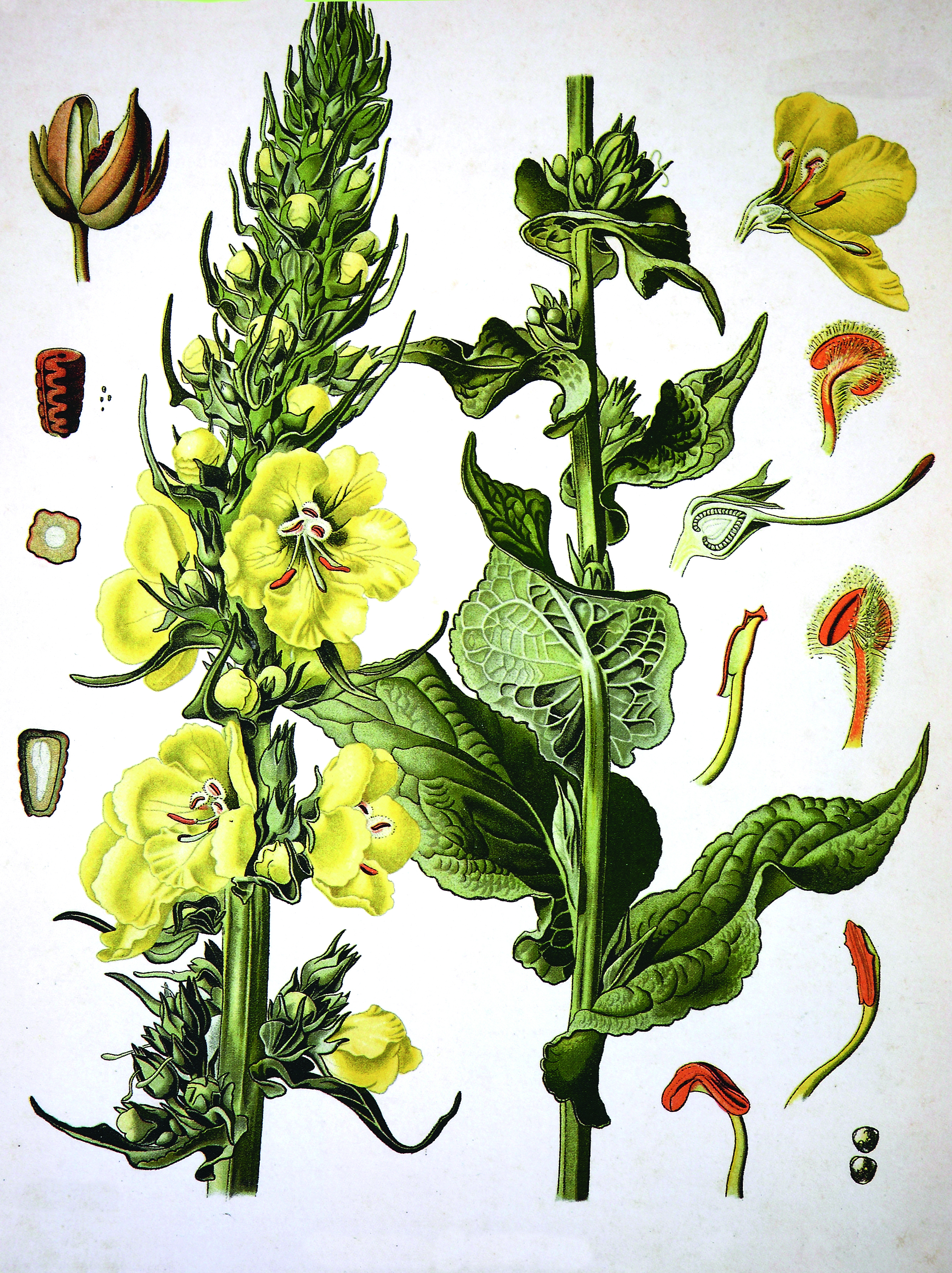
From its roots to its flowers, verbascum is a plant of many medicinal uses.
More important, however, were the medicinal properties of the plant. Classical-era herbalists Pliny the Elder, Galen and Dioscorides — ‘the father of pharmacognosy’ — identified it as treatment for sundry complaints and their wisdom was acknowledged by John Gerard in his Herball of 1597. Its leaves had ‘a digesting and cleansing quality’, he declared. Boiled and laid on ‘large swellings and inflammations of the eyes’ to cure and ease pain, they were ‘good for them that are broken inwardly’ and would treat ‘the old cough’.
Similarly, treacle dribbled on verbascum leaves or combined in an ointment with ‘old hog’s grease’ cured haemorrhoids, whereas placing its leaves in shoes or inside socks day and night ‘brought down in young maidens their desired sickness’. Fumes from burned leaves breathed in twice a day eased lung congestion and Gerard noted that Kent husbandmen gave leaves to cattle to combat cough, for which quality they were known as bullock’s lungwort.
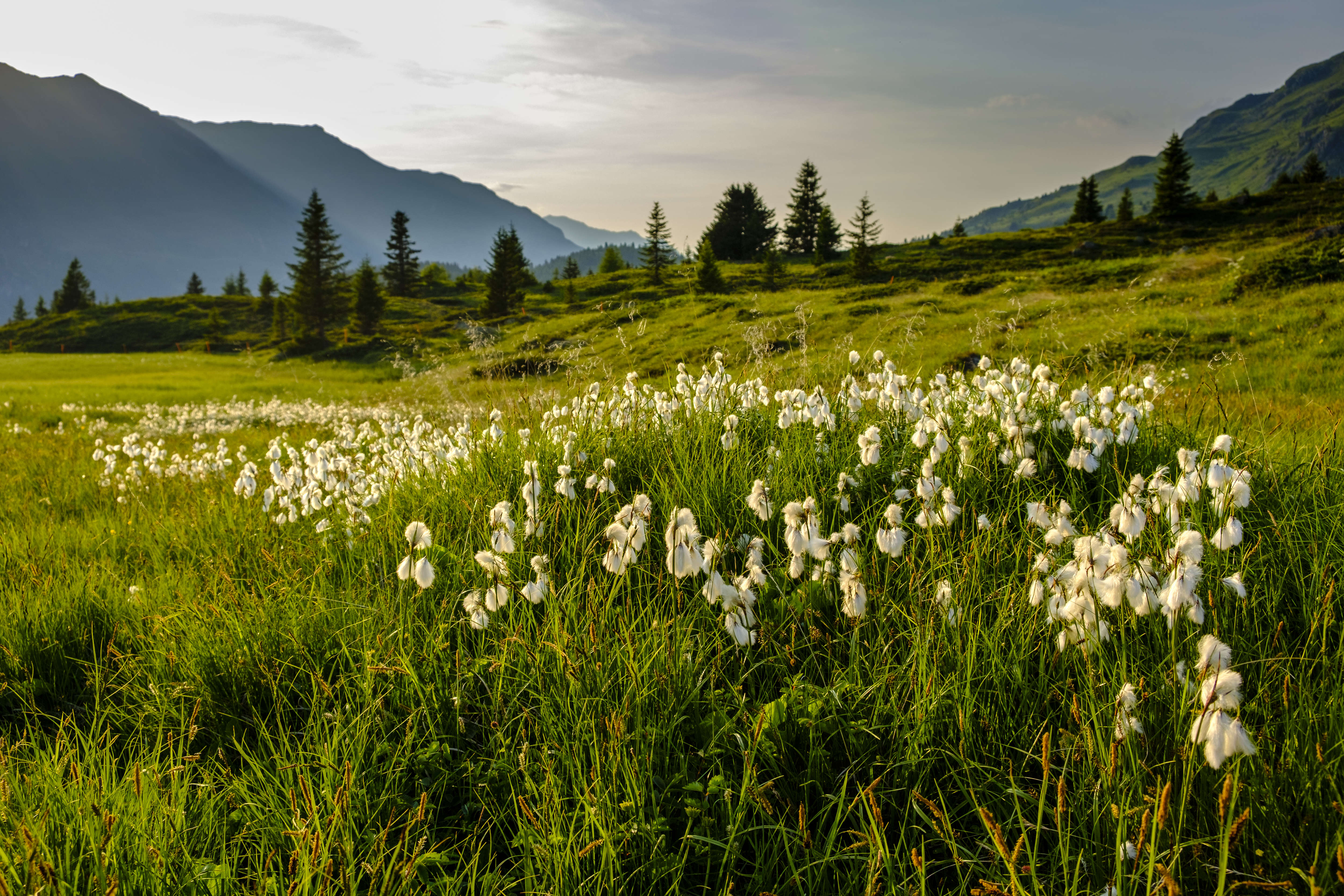
In 1653, Nicholas Culpeper further propounded the virtues of the plant, adding that the root boiled in red wine was ‘profitable for those that are bursten, and for cramps and convulsions’. A gargle eased toothache, too, and a decoction of flowers in distilled water was ‘said to be the most excellent remedy for gout’. Verbascum juice melted rough warts away and leaves and seed that was boiled in wine would ‘draw forth speedily thorns or splinters gotten into the flesh, ease the pains and heal them also’. A similar treatment would dissolve and heal boils in the groin. Clearly, no medieval doctor could ignore this essential curative and its abilities to tackle a spectrum of physical discomforts are sustained by modern herbalists.
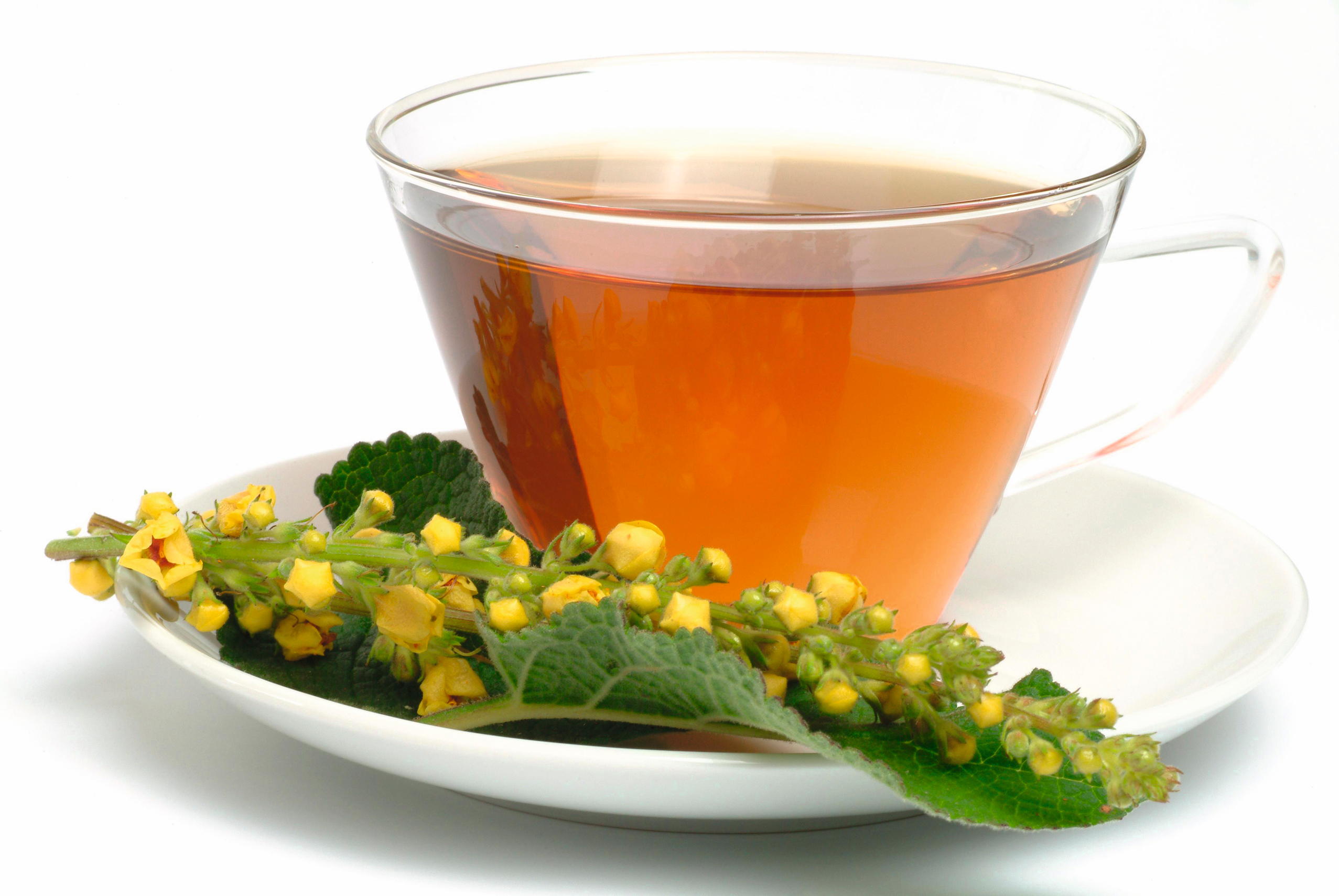
Mullein tea, made with Verbascum nigrum, is thought to relieve respiratory conditions, such as chronic coughs, colds and asthma.
Verbascum has some 300 varieties around the world and horticulture has produced a number of cultivars to make statuesque decorative contributions to our borders, but the original and most familiar is V. thapsus, its name derived either from Thapsos, a Sicilian community, or from Thapsus in ancient Tunisia and classified by Linnaeus in 1753.
The many uses of mullein

• Crushed verbascum seeds thrown into still or slow-moving water release ratenone, a soporific long known across Europe and Asia and used to stun and take fish. The plant and the practice were taken to North America, where tribes happily accepted that fishing was easier this way
• In classical Mediterranean homes, it was known that ripe figs wrapped in mullein leaves kept longer
• John Gerard dismissed as ‘vain and superstitious’ the medieval belief that mullein leaves ‘gathered when the sun is in Virgo and the moon in Aries’ would prevent ‘falling sickness’ (epilepsy)
• According to Greek mythology, the gods gave a stalk of mullein to Odysseus as a defence against the enchantress Circe who turned his companions into swine (depicted in Anton Romako’s Odysseus in front of Circe, above). The notion that it possessed the power to ward off witches persisted into the Middle Ages
A generous rosette of broad hairy leaves of silvery hue appears in its first year, with a stout stem an inch thick and up to 6ft in height, clad in small yellow flowers in the second. Groups of blooms open first from the base and then appear progressively up the stem, each bunch displaying at sunrise and closing in the afternoon, the process lasting from June through to August and offering an ongoing attraction especially to bees and hoverflies. If these or other pollinators fail in their duties, the flowers are self-fertilising anyway.
The plant then starts to wither, but its resolution continues in prolonged and prolific seed production. Researchers in California, US (where the plant is an invasive weed), have calculated that each flower produces a capsule with up to 700 seeds, with the total from a single stem approaching a quarter of a million. In the right conditions, one-third may germinate and most fall close to a parent, ensuring ongoing colonisation.
Verbascum tolerates a variety of locations and Gerard wrote that it seeded freely on ‘the borders of pastures and ploughed fields, or causeways and in other untilled places’. He recorded the plant’s appearance ‘in great plenty’ in Eltham in Kent, Blackheath and Highgate in London and in ‘most countries of England that are of sandy soil’. Seeds from two million years ago found in cliffs at West Runton on the Norfolk coast in a geological layer known as the Cromer Forest Bed testify to its historic native distribution in this lucky land.
This feature originally appeared in the print edition of Country Life — here's how you can subscribe to Country Life magazine.
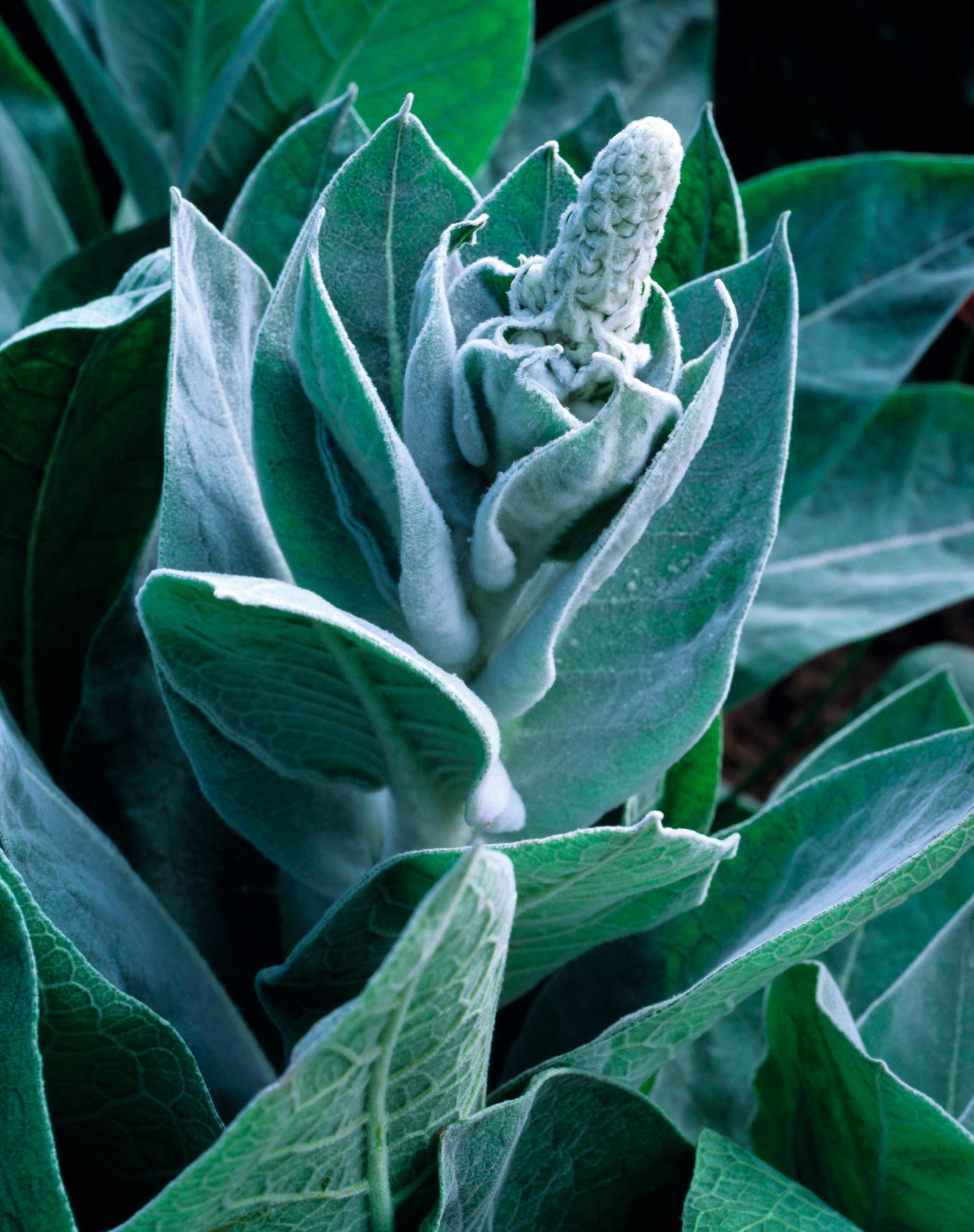
A layer of hairs lends a frosted appearance to Verbascum bombyciferum ‘Polarsommer’
After some decades in hard news and motoring from a Wensleydale weekly to Fleet Street and sundry magazines and a bit of BBC, Ian Morton directed his full attention to the countryside where his origin and main interests always lay, including a Suffolk hobby farm. A lifelong game shot, wildfowler and stalker, he has contributed to Shooting Times, The Field and especially to Country Life, writing about a range of subjects.
-
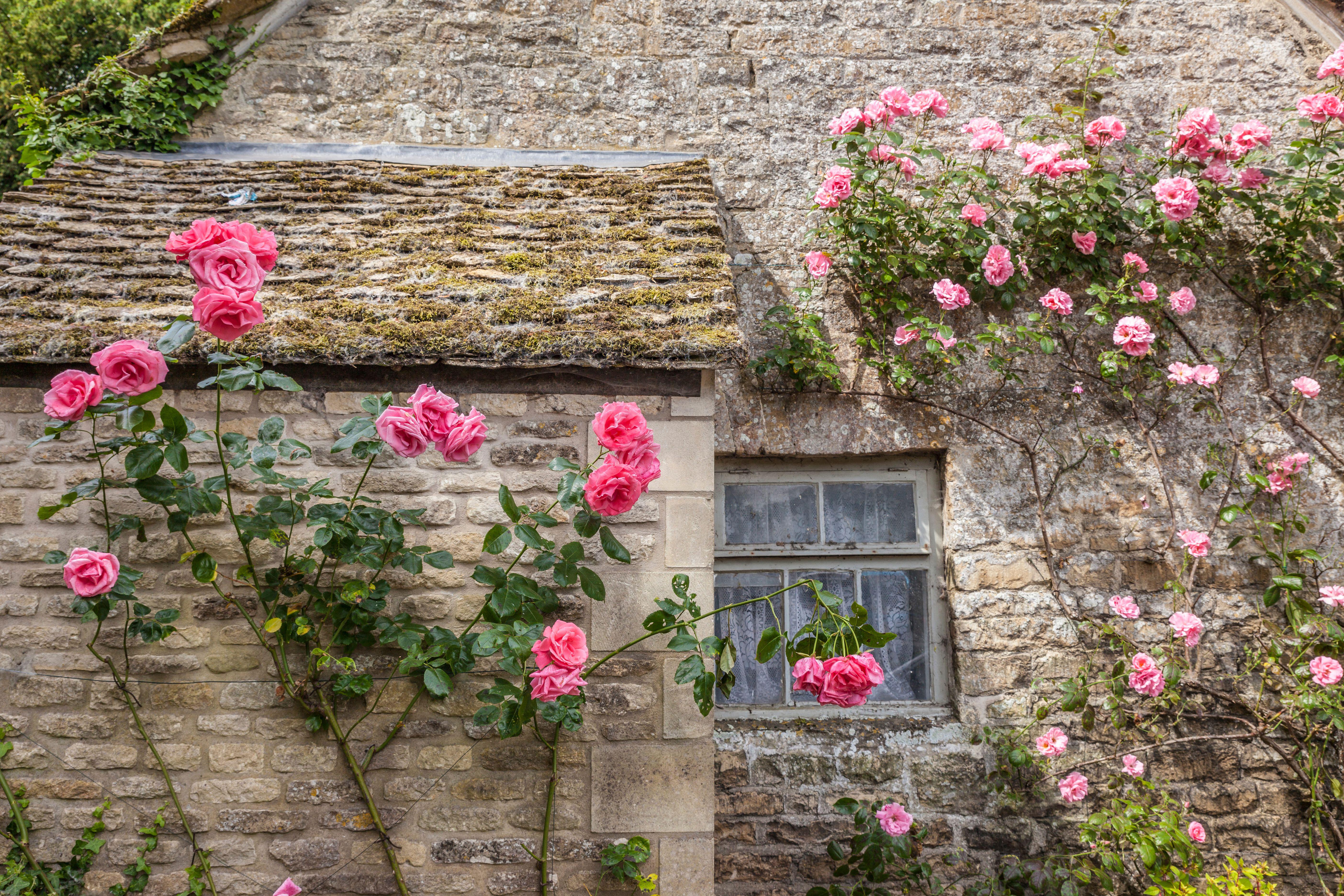 Bare roots: How to find the perfect rose and how to plant it
Bare roots: How to find the perfect rose and how to plant itTabi Jackson Gee moved to a cottage in Wiltshire, and went about finding the perfect rose to bring light and colour to the garden.
-
 Flying backwards, pink milk, and holding your breath. A Country Life quiz of animal facts
Flying backwards, pink milk, and holding your breath. A Country Life quiz of animal factsDo you know the difference between a bobbit worm and a mantis shrimp? You will soon.
-
 Bare roots: How to find the perfect rose and how to plant it
Bare roots: How to find the perfect rose and how to plant itTabi Jackson Gee moved to a cottage in Wiltshire, and went about finding the perfect rose to bring light and colour to the garden.
-
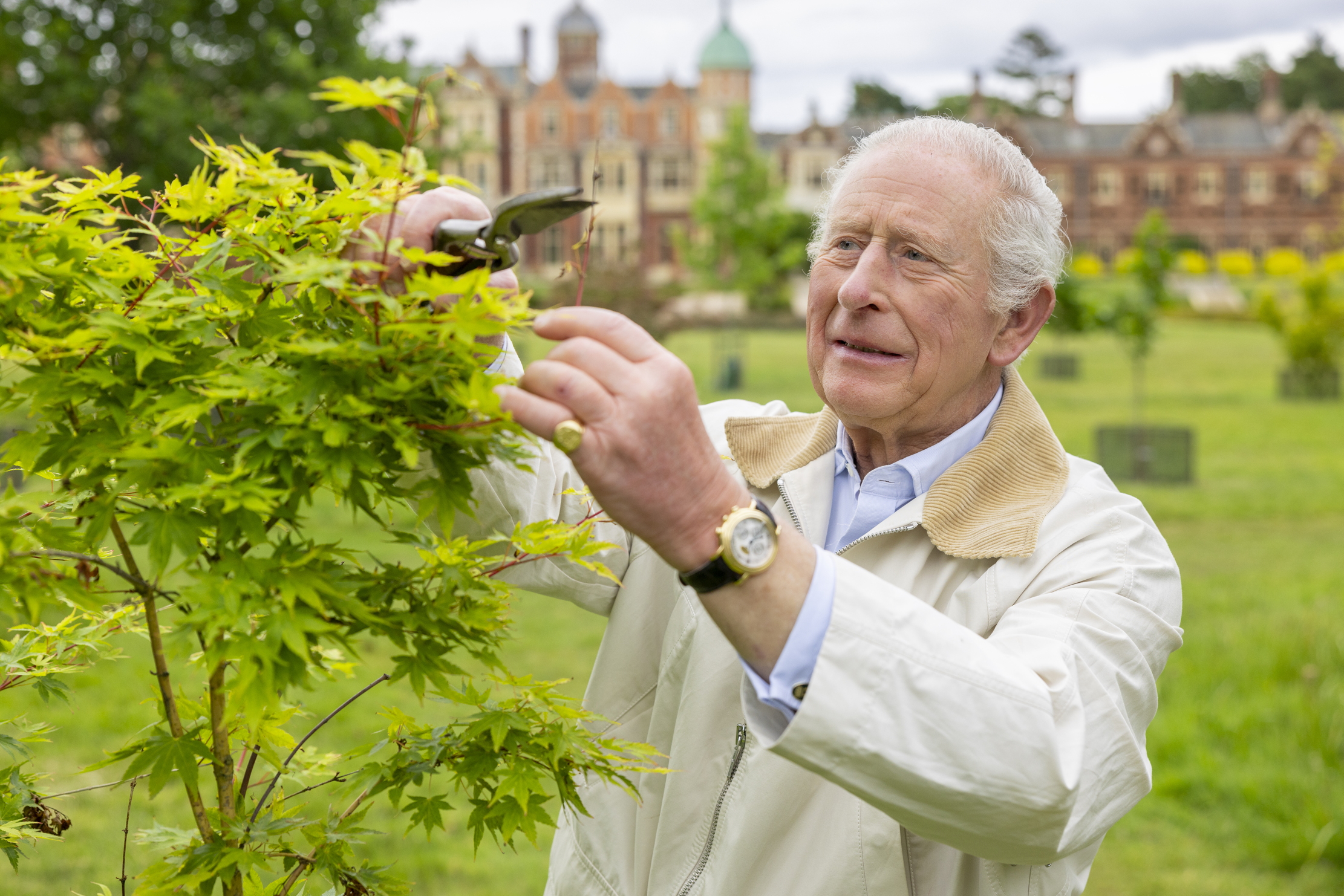 A royal success: The King's gardens at Sandringham
A royal success: The King's gardens at SandringhamIn only three years, The King has overseen a remarkable resurrection of the gardens and parkland at Sandringham. Charles Quest-Ritson visits
-
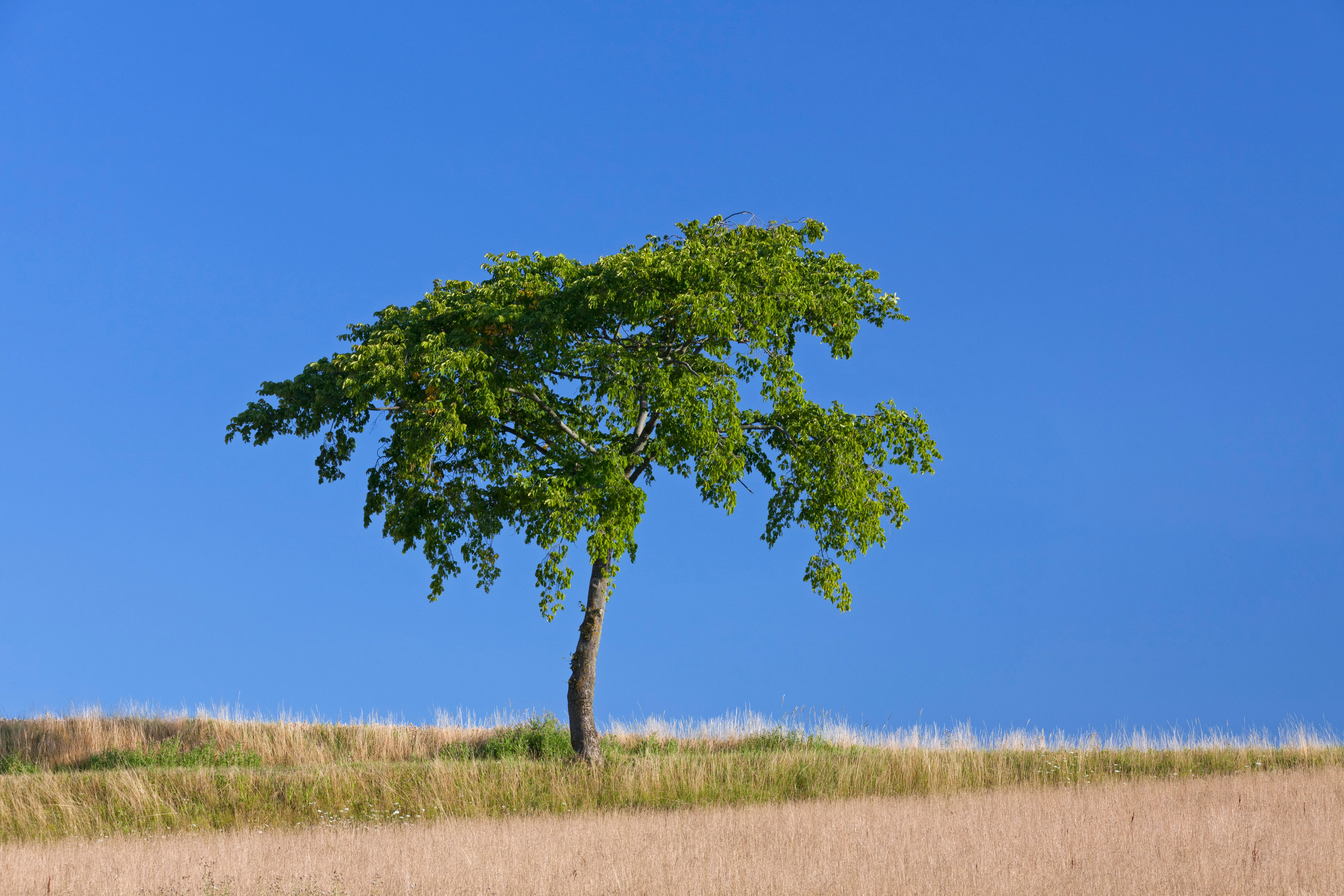 The trees that are as fine to eat as they are to look at
The trees that are as fine to eat as they are to look atMark Diacono doesn't grow many trees for the sake of the bounty they provide — but these are the notable exceptions.
-
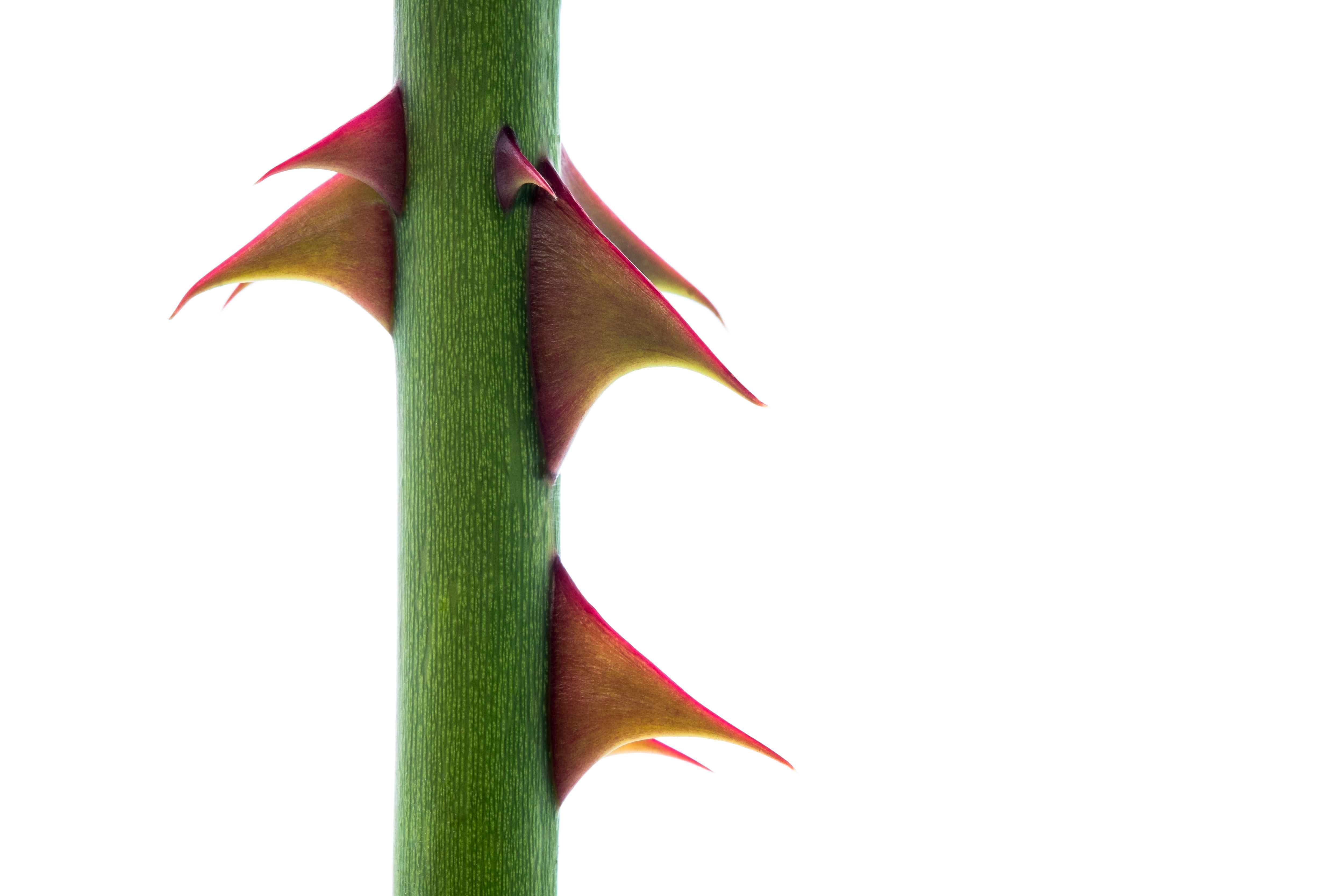 Bothered by brambles and snagged by sow thistles, but what is the point of all this thorny microaggression?
Bothered by brambles and snagged by sow thistles, but what is the point of all this thorny microaggression?Nature’s spiky deterrents — thorns, spines and prickles — may be quick to catch us out, but they can also prove to be a useful ally.
-
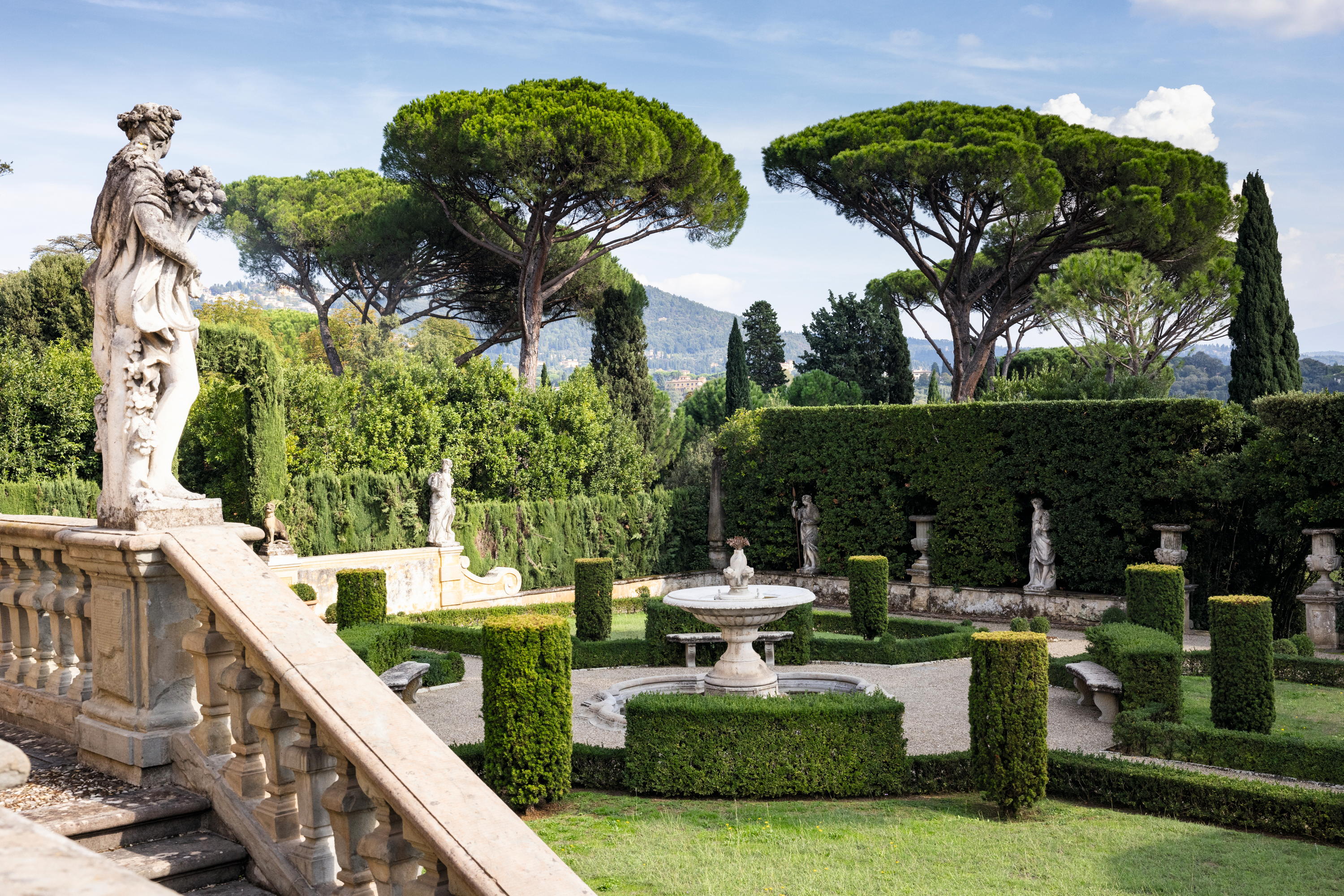 The Tuscan gardens where the English and Italian traditions come together, and Yorkshire rhubarb grows happily beside spectacular citrus
The Tuscan gardens where the English and Italian traditions come together, and Yorkshire rhubarb grows happily beside spectacular citrusNick Dakin-Elliot, who gardens in Tuscany, is still moved by the Italian hilltop gardens that command some of the most beautiful views in the world.
-
 'My family wore wool at a time when everyone else had cast it off in favour of manmade fabrics': The knitwear pioneer who is one of David Beckham's countryside champions
'My family wore wool at a time when everyone else had cast it off in favour of manmade fabrics': The knitwear pioneer who is one of David Beckham's countryside championsJulie Harding speaks to Rachel Carvell-Spedding the founder of British knitwear brand Navygrey, and one of David Beckham's countryside champions.
-
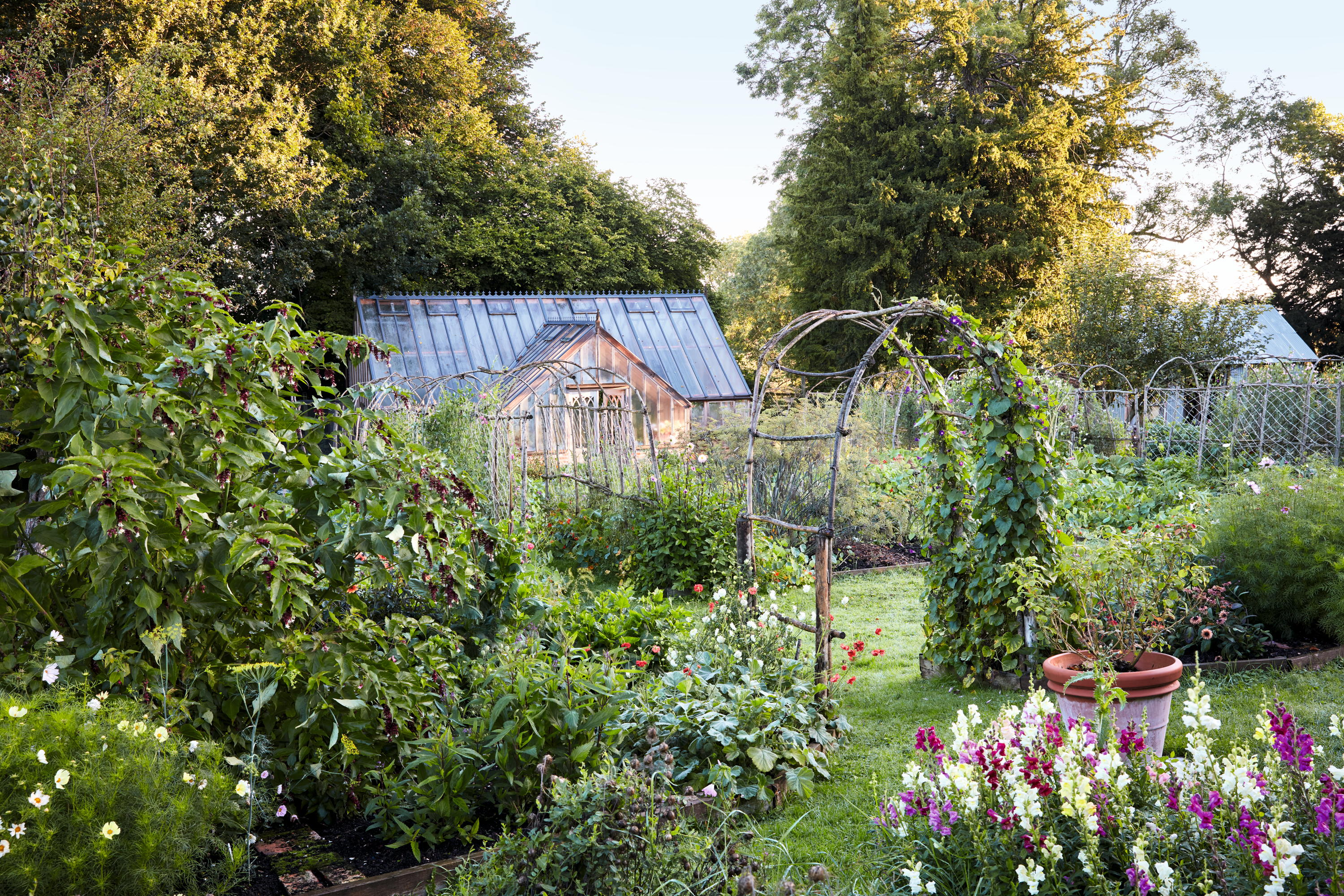 James Alexander-Sinclair: Making a new garden for someone is 'thrilling', but we need more sensitive and skilled gardeners to look after them
James Alexander-Sinclair: Making a new garden for someone is 'thrilling', but we need more sensitive and skilled gardeners to look after themPay your gardeners properly, says James Alexander-Sinclair as, without them, you will have no garden.
-
 'Seeing the work that people are doing all around the world has given me hope for the future': The young naturalist who is one of David Beckham's countryside champions
'Seeing the work that people are doing all around the world has given me hope for the future': The young naturalist who is one of David Beckham's countryside championsJulie Harding speaks to Ramandeep Nijjar, a young naturalist who has made an impact on the world even before finishing university, and one of David Beckham's countryside champions.
